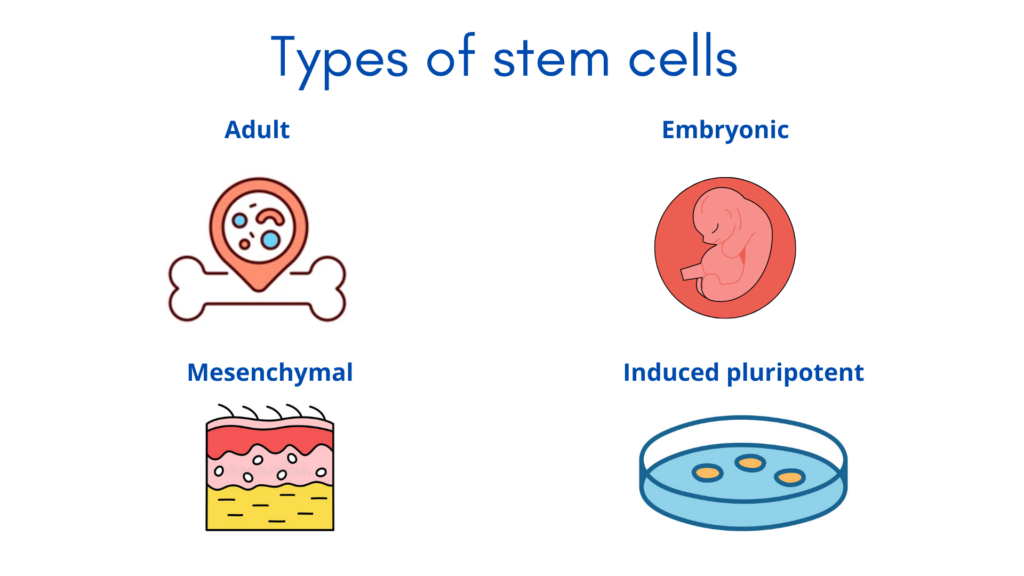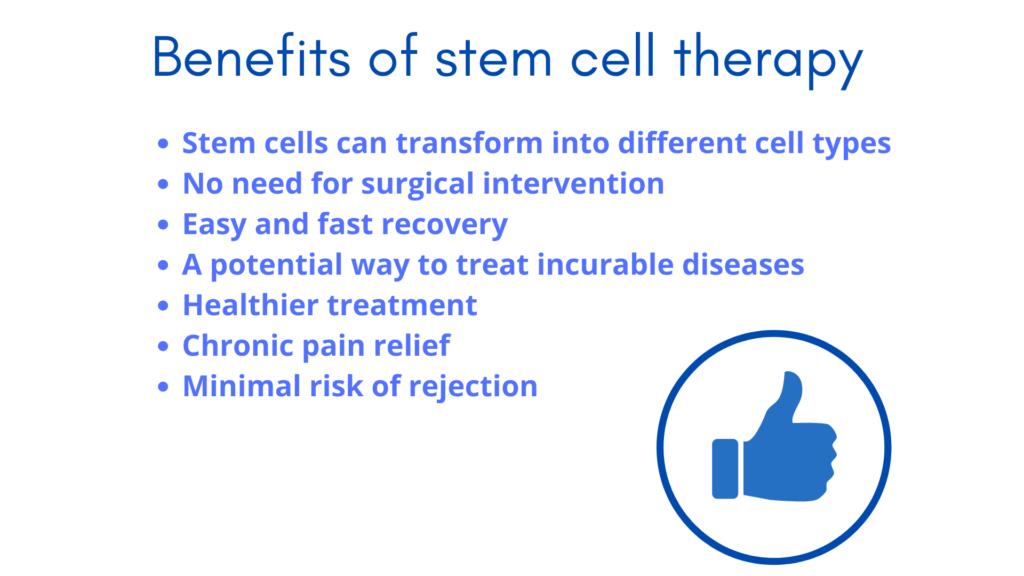Table of Contents
Living with an incurable condition could be exhausting for patients and their families. Endless therapies and medications drain strength and undermine the morale of one. Hopefully, for those who suffer from chronic, cardiovascular, or neurodegenerative diseases discovering the benefits of stem cell therapy could be a relief.
Stem cell treatment is a non-invasive treatment based on a patient’s biological materials and aims to regenerate ruined cells in the body. Let’s see how stem cell therapy works and what benefits it brings.
The basis of regenerative medicine
Stem cells are the primary building material of the human body. When the embryo is developing, stem cells transform into the required cell types to grow organs, muscles, the brain, and other body tissues. Scientists learned how to collect stem cells, and grow and manipulate them to transform them into specialized cell types. Nowadays, stem cells are the basis of regenerative medicine as they have the potential to repair damaged tissues in the human body.

Stem cells can be found not only in an embryo. Based on their origin, stem cells are divided into several types:
- Embryonic stem cells. A three to five days old embryo is called a blastocyst. The blastocyst has around 150 stem cells. They are usually harvested from extra embryos when in vitro fertilization. Embryonic stem cells are the most versatile and have the potential to transform into any type of cell.
- Adult stem cells. Our skin and other organs can regenerate due to adult stem cells, which have existed in our body since the embryonic period. They are more specific than embryonic stem cells, as they target the tissue of their origin. Scientists have found adult stem cells in the brain, bone marrow, blood and vessels, skin, liver, and skeletal muscles. Adult stem cells can self-renew as long as it’s required to repair damaged tissue. Currently, scientists study the potential of adult stem cells to differentiate into any tissue.
- Mesenchymal stem cells (MSCs). MSCs were discovered in connective tissue such as fat, umbilical cord tissue, and amniotic fluid. These cells are used to create bones, fat cells, and cartilage.
- Induced pluripotent stem cells (iPS). IPS cells are cells created in a lab. Scientists use other stem cell types to reproduce iPS cell lines which can divide indefinitely and be stimulated to transform into a particular cell type.
Stem cell therapy process
Stem cell transplantation is a painless procedure. First, the professional will evaluate your health condition and decide what type of transplantation is best for you. Then, sample tissue will be taken from you or a donor to derive stem cells. Finally, stem cells will be delivered into your body through intravenous infusion. The procedure rarely has any side effects and the recovery period is short.
Benefits of stem cell therapy
Scientists carefully study stem cell therapy, as it promises the safest way to treat severe or currently untreatable conditions. Several stem cell therapies were approved by the US Food and Drug Administration. The studies show that stem cell therapy improves survival rates for patients with leukemia. This is just one of several benefits of stem cell treatment. Let’s outline the advantages of stem cells for health.

#1 Stem cells can transform into different cell types
Stem cells are versatile, they can develop into any type of cell and replace damaged cells in blood and organs. Stem cells’ ability to adapt made them so attractive to scientists and now they can grow and manipulate stem cells to bring positive outcomes to medicine.
#2 No need for surgical intervention
Stem cell therapy is noninvasive. The procedure of delivering stem cells into the body is simple and painless. Depending on the source of stem cells the patient or donor can experience slight discomfort, but usually, tissue samples are taken without any surgical manipulations.
#3 Easy and fast recovery
As stem cell administration doesn’t require prolonged preparations, anesthesia, or surgical operations, the body doesn’t take long to recover. Stem cell therapy is specially designed to help people get back to their daily tasks faster.
#4 A potential way to treat incurable diseases
The discovery of stem cells gave hope to combat diseases that clinicians haven’t still found a way to treat. Stem cells show promising results in treating such diseases as Parkinson’s disease, Alzheimer’s, diabetes type 1, multiple sclerosis, osteoarthritis, and more. Clinical trials and research are ongoing.
#5 Healthier treatment
The other benefits of stem cell treatment are that it’s less dependent on medications and is cost-effective. Traditional therapy often requires medicinal support to manage pain and side effects. Stem cell therapy has fewer to no side effects and doesn’t require any pills to support treatment. It also doesn’t cost much and requires from one to three injections to administer stem cells.
#6 Chronic pain relief
Stem cells could be used in pain management. The idea of releasing pain with the help of stem cells is based on their capability to repair damaged neural cells, therefore eliminating the source of pain.
#7 Minimal risk of rejection
As stem cells are taken from a patient’s body or a relative donor, there’s less to no risk that the cells will be rejected or cause complications.
Wrapping up
More benefits of stem cell treatment are still to be discovered, still, we already can observe the positive effects of the therapy. Over the past few years, the scientific world has witnessed expanding achievements in clinical trials dedicated to stem cell therapies. Several trials have shown notable results for various diseases treatment. Stem cell therapy, although not widespread, has developed into the safest and the most efficient treatment we’ve ever had.
If you’re interested in applying stem cell therapy for your condition, don’t hesitate to fill out a contact form and our professionals will advise you.


